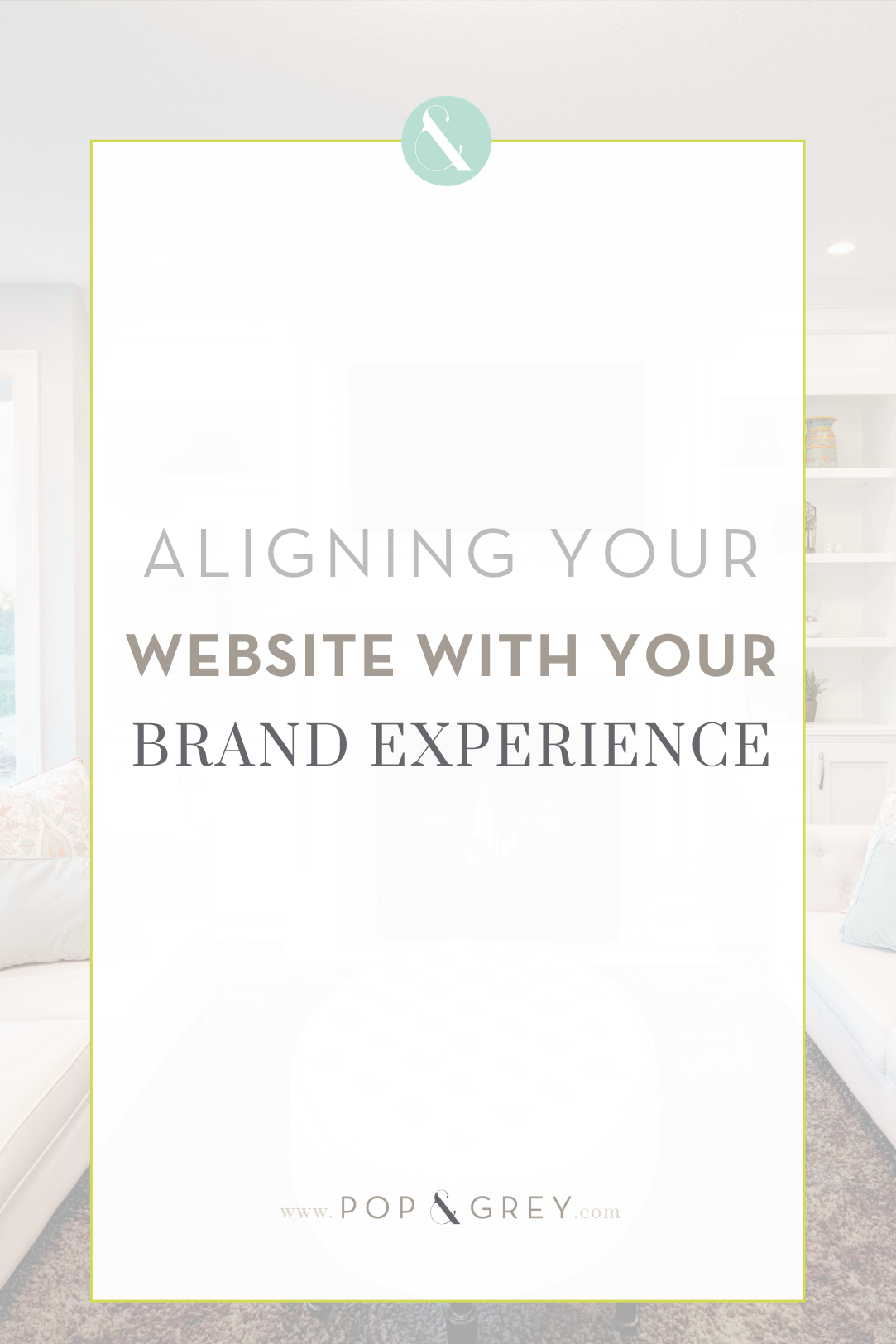
Brand experience is how you make people feel, connect, and engage them. Experience is an important and often overlooked, part of branding. It feels too touchy, feely, or “woo woo” to some. Website is your digital doorstep and opportunity to usher people into that experience. If they’re turned off by your website experience, you may never get the chance to connect with them again. Your website experience should reflect the experience of working with you so that people know what to expect. It needs to build trust, excitement, confidence and prepare them to work with you. If you do it right, by the time they actually get on a call or meet you face to face, they’ll feel like they already know you. This means that they’ll feel like they’ve already connected with you and want to work with you. So let’s dive in on aligning your website with your brand experience.
Any designer knows the importance of your service experience and that your clients are only as happy with the finished product as they are about how you make them feel.
The language you use and the visuals you incorporate into your website begin to create the experience, but it goes a lot farther than that. How do you translate how you make people feel when working with them in person into a digital format? I’ll give you some of my secret sauce for how we do it for our clients.
Navigation
Functionality and ease of use are a huge part of creating an experience for your visitors. If they have to hunt down the information they need, they’re already flustered when they find it. Know from the start what information people need, and the order they need to consume it for it to make sense and push them to get on a call, then do your best to craft that intentional journey. Think of your website as a moving map that someone will naturally follow to the desired action you want them to take, book a call, download a freebie, join your Facebook group, etc. Creativity takes a backseat to functionality when it comes to making your site easy to navigate and interact with.
White space & Color Palette
If you know your potential customers are already overwhelmed, busy people, then creating a calming experience on your website will help to start to build trust with them. Give your copy and visuals room to breathe, so that the experience of discovering the gems in your portfolio is a fun treat rather than another exhausting, overwhelming task. White space also allows important things to stand out, like calls to action.
Values/Brand Manifesto
People want to like the people they’re working with. And we tend to like people with shared values. It creates an instant emotional connection to realize we think some of the same things are important. So don’t figure out your brand values only to stick them in a drawer. Make sure those values come across clearly on your website. Use your about page to highlight those things that form a connection with your audience rather than a fact sheet about your experience. For example, if you are an animal lover and donate 10% of your profits to a local shelter then mention it! It’s a great conversation piece.
Content Strategy
Your content strategy when creating blog posts, social media posts, and other real-time digital content should be based on finding ways to emotionally connect with your potential clients. This is way more than just revealing pretty pictures of new projects. Incorporate topics that reveal values you share with your audience and give them a deeper look at what it’s like to get to know you offline. Some ways to do that would be to do a “day in the life” YouTube video and post it in a blog, which is a nice SEO boost. Show up in your Instagram stories regularly and let your audience get to know you the mom, wife, woman, dog lover and mastermind behind your business.
Contact Form
This is arguably one of the most important pages on your website and where you want to drive every lead. So the experience to get here needs to be a great one, but don’t drop the ball once they’re here. What last nudges would help get potential clients on the phone with you? What last-minute information could they potentially be wondering? Make it easily accessible from here. Also, think about how you’re asking them to reach out. Is there a more personal way than just a plain Jane contact form? Your brand should dictate your style here, but I love this mad-libs style contact form we created for Terri Morgan Designs. It fits her sweet, quirky, southern personality to a T, and the clients that love it would love her too.
Overall the experience of navigating your website should feel very cohesive with the experience of sitting down in a meeting with you. Your personality and values should be the driver of what you include and how you include it in your website so that people know exactly what to expect when your site leads them to schedule a call.


